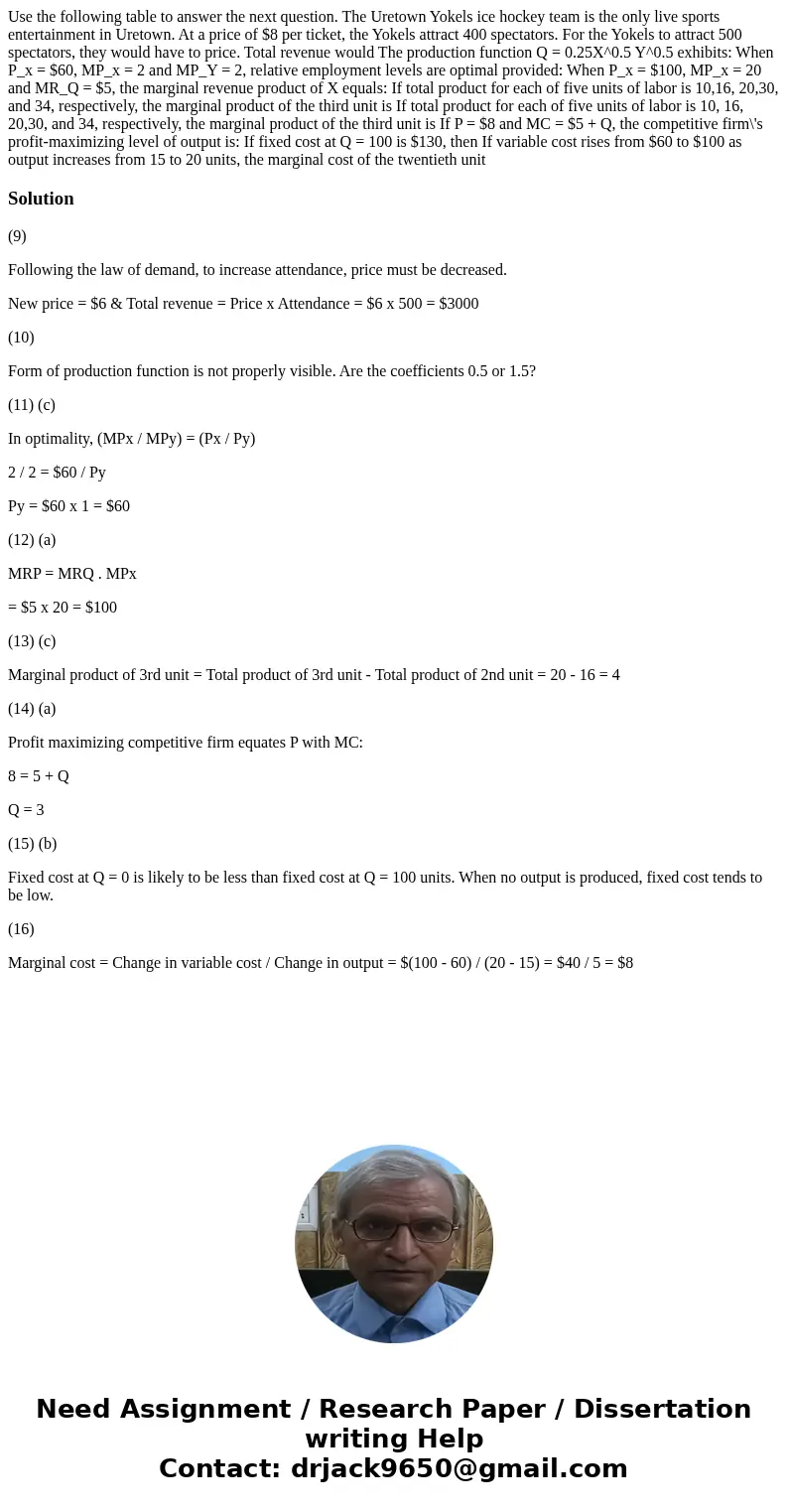Use the following table to answer the next question. The Uretown Yokels ice hockey team is the only live sports entertainment in Uretown. At a price of $8 per ticket, the Yokels attract 400 spectators. For the Yokels to attract 500 spectators, they would have to price. Total revenue would The production function Q = 0.25X^0.5 Y^0.5 exhibits: When P_x = $60, MP_x = 2 and MP_Y = 2, relative employment levels are optimal provided: When P_x = $100, MP_x = 20 and MR_Q = $5, the marginal revenue product of X equals: If total product for each of five units of labor is 10,16, 20,30, and 34, respectively, the marginal product of the third unit is If total product for each of five units of labor is 10, 16, 20,30, and 34, respectively, the marginal product of the third unit is If P = $8 and MC = $5 + Q, the competitive firm\'s profit-maximizing level of output is: If fixed cost at Q = 100 is $130, then If variable cost rises from $60 to $100 as output increases from 15 to 20 units, the marginal cost of the twentieth unit
(9)
Following the law of demand, to increase attendance, price must be decreased.
New price = $6 & Total revenue = Price x Attendance = $6 x 500 = $3000
(10)
Form of production function is not properly visible. Are the coefficients 0.5 or 1.5?
(11) (c)
In optimality, (MPx / MPy) = (Px / Py)
2 / 2 = $60 / Py
Py = $60 x 1 = $60
(12) (a)
MRP = MRQ . MPx
= $5 x 20 = $100
(13) (c)
Marginal product of 3rd unit = Total product of 3rd unit - Total product of 2nd unit = 20 - 16 = 4
(14) (a)
Profit maximizing competitive firm equates P with MC:
8 = 5 + Q
Q = 3
(15) (b)
Fixed cost at Q = 0 is likely to be less than fixed cost at Q = 100 units. When no output is produced, fixed cost tends to be low.
(16)
Marginal cost = Change in variable cost / Change in output = $(100 - 60) / (20 - 15) = $40 / 5 = $8

 Homework Sourse
Homework Sourse